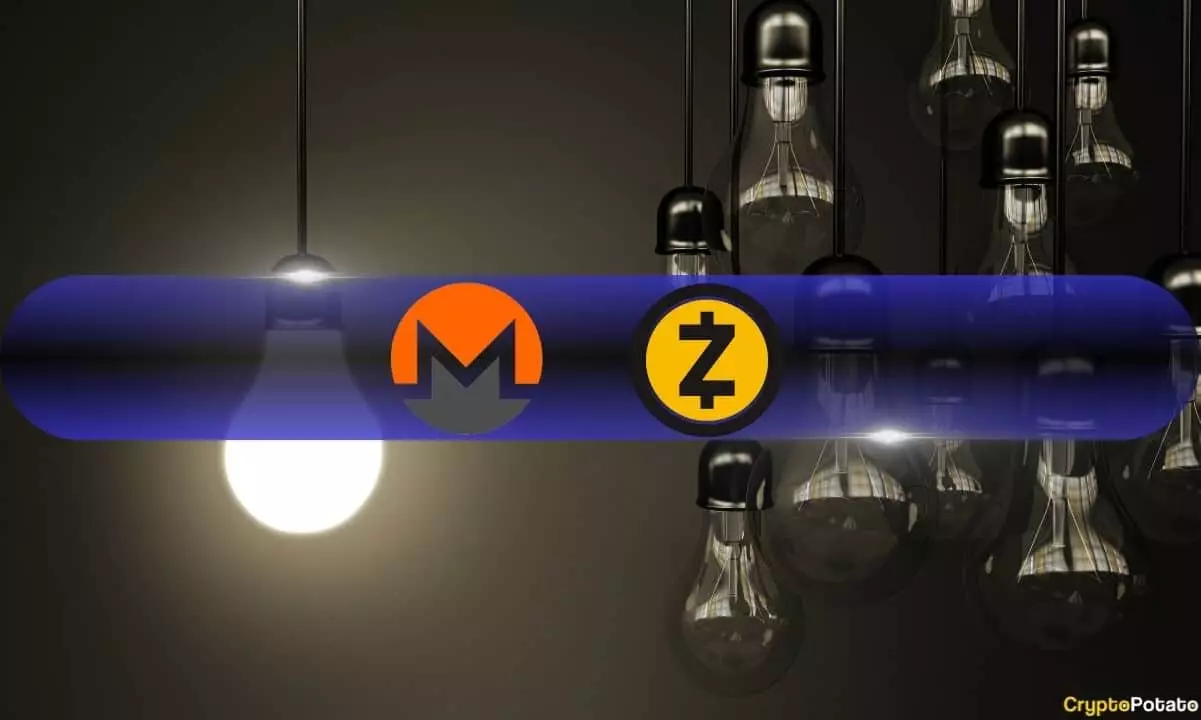The liquidity of privacy tokens has recently experienced a drastic decline, reaching an all-time low of just $5 million, according to a report by Kaiko. This concerning drop in liquidity can be attributed to the delisting of several trading pairs by OKX, a cryptocurrency exchange, due to their failure to meet certain criteria. Regulatory pressures have had a significant impact on privacy tokens like Monero (XMR) and Zcash (ZEC), with platforms such as Binance considering delisting them due to their low liquidity.
Despite the overall turmoil in the cryptocurrency market, the end of 2023 witnessed a few notable developments. During a recent sell-off, the trade volume on Korean exchanges reached a multi-year high, signifying strong activity in the market. Bitcoin’s market share also rose to 32%, a level not seen since 2020, amidst a general decline in altcoin trading volumes. This shift in trading dynamics occurred despite increasing regulatory efforts in South Korea, including proposed rules for crypto exchanges and a ban on crypto purchases with credit cards.
Positive Trends in SOL’s Market Share
The market for SOL (Solana) has displayed positive trends in terms of trading volume. In some instances, SOL’s trading volume even surpassed the combined volume of Bitcoin and Ether on various exchanges. This rare occurrence in the crypto world indicates a shifting landscape in the altcoin domain. The rise of SOL’s market share, particularly in comparison to Ether, highlights the growing prominence of alternative cryptocurrencies.
Slow Start for PYUSD in the Crypto Trading Sphere
PYUSD, a relatively new stablecoin, has experienced a slow start in the crypto trading sphere. Despite being listed on several centralized exchanges, its trading volume remains significantly low compared to well-established stablecoins like Tether (USDT). This tepid response from traders and investors indicates that PYUSD has yet to gain significant traction in the market.
The Cryptocurrency World Awaits the SEC’s Decision on Ark’s Spot Bitcoin ETF
January 10 marks a pivotal moment in the cryptocurrency world as the U.S. Securities and Exchange Commission (SEC) is expected to make a decision regarding Ark’s spot Bitcoin exchange-traded fund (ETF). Regardless of the outcome, the market is bracing itself for increased volatility. This anticipation comes after Bitcoin’s recent recovery from a price crash that resulted in significant liquidations. While the initial cause of the crash was speculated to be an analyst’s remarks about the spot Bitcoin ETF decision, further reports suggest deeper underlying issues.
Before the occurrence of the price crash, several market indicators hinted at trouble. Price slippage rates on major exchanges such as Binance, Coinbase, and Kraken exceeded 0.02% on January 2, indicating deteriorating liquidity even as Bitcoin prices hovered around $45,000. Futures markets also pointed to an overheated market, as Bitcoin perpetual futures open interest in USD reached a peak of $10 billion in early December, the highest since November 2021. This spike in open interest suggested an increase in leverage in the market. Moreover, high volumes in options markets, particularly Bitcoin options on Deribit, indicated that traders were anticipating heightened volatility in light of the SEC’s forthcoming decision on the spot Bitcoin ETF.

